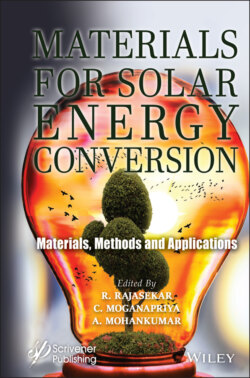Читать книгу Materials for Solar Energy Conversion - Группа авторов - Страница 34
1.9.1 Natural Circulation Methods
ОглавлениеSolar energy is naturally available in the atmosphere which helps to natural dryer type. Especially in developing countries, this type of technology has been utilized for agricultural field. Further, this method split into two groups such as open to sun drying method and direct solar energy crop drying method [1].
Open to Sun Drying Method
A solar radiation incidents on the spread crop surface initially and then few amount of solar radiation is refused to absorb and rest energy is captured by crop products that depends on color. Thermal energy is formed from captured solar energy and there is a risen of crop temperature, and then, due to this continuous process, moisture content will be eliminated in the form of evaporation loss. At last, food products become well dried and ready to market. The schematic diagram of open to sun drying type is shows in Figure 1.11.
Benefits:
✓ Tropical climatic countries approach this type of drying easily
✓ Minimal initial cost
✓ No need of skilled labor
✓ Maintenance is low
Disadvantages:
✓ Heating process is slow.
✓ Food products may be affected by insects, birds, dust, and some microorganisms.
✓ Due to irregular climatic changes like as rain and cloudy, product quality and efficiency varied.
✓ Sometimes color of the products also changed due to excess or scarcity of proper drying.
Direct Solar Energy Crop Drying Method
In this method, the components consist of transparent glass cover and trays placed inside the solar dryer module. Incident radiation falls on the transparent cover, few amount of solar energy is reflected again back to environment, and the remaining entered inside the dryer. Then, crops absorbed the transmitted radiation and temperature of the product gets increased but emitting radiation from crop is not permit to move away from chamber to environment due to covered crops. Provision is given for escaping of air after dried crop at top of the system schematic. Figure 1.12 shows direct solar energy crop drying type.
Figure 1.11 Open to solar drying system method.
Advantages:
✓ Needs small space for drying
✓ Efficiency is higher
✓ Prevention from micro-organisms and other foreign particles
✓ Easy available in market
✓ Maintenance is quite simpler
Figure 1.12 Direct solar energy crop drying method.
Figure 1.13 Forced circulation system method.
Disadvantages:
✓ Not suited for a larger capacity of drying foods
✓ Reduction of radiation transmission into cover due to moisture condensation occurs
